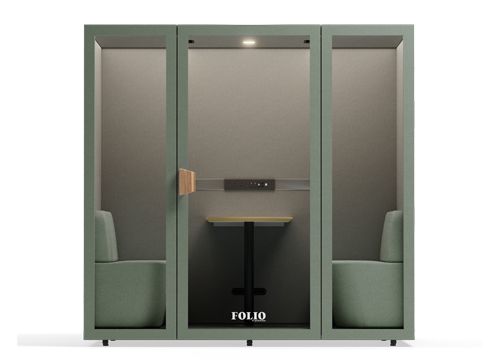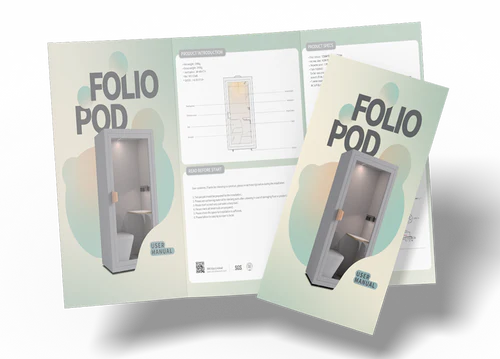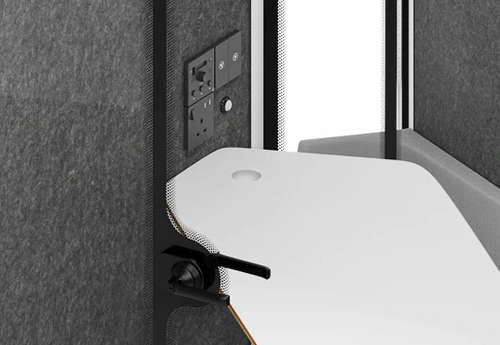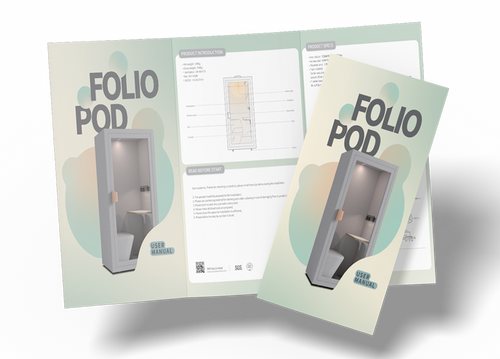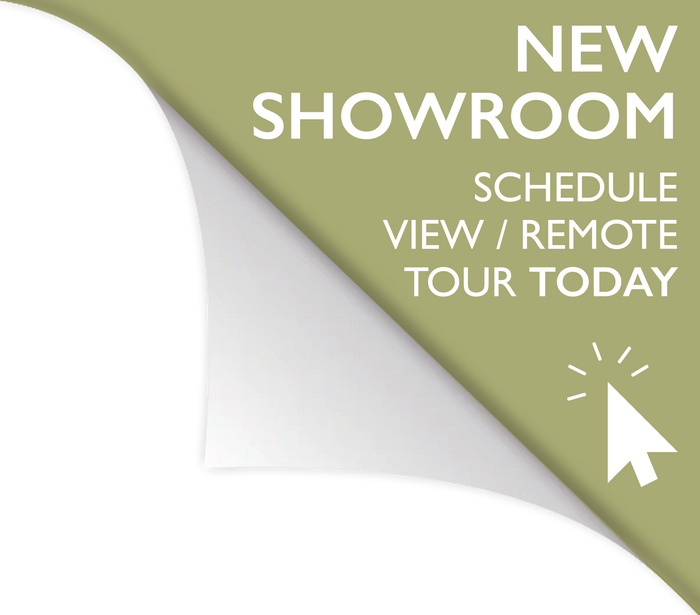The Science of Lighting in Focus Spaces vs. Collaboration Areas
Lighting might not be the first thing you notice in a workspace
but it’s often the first thing your brain responds to. Whether it’s a sharp pool of light helping you stay dialled into a spreadsheet, or a warm glow softening the tone of a creative brainstorm, the right workspace lighting design makes all the difference. Get it wrong, and you’ll end up with eye strain, restless energy, or worse — a team that starts associating their meeting room with migraines. That’s because task lighting for focus and ambient lighting for collaboration serve very different psychological purposes. In this blog, we’ll explore how strategic lighting choices can support both productivity and connection — without switching off your design sensibilities.
When it comes to focus spaces, lighting should act like a quiet assistant — present, supportive, but never in the way. Too dim, and your eyes work overtime; too harsh, and you’re bathed in interrogation-room chic. The sweet spot is in adjustable task lighting, ideally placed to minimise glare and maximise clarity. Cool-white bulbs in the 4000K–5000K range mimic daylight and help maintain alertness — perfect for deep work environments, reading-intensive tasks, or long stints at the screen. Pair this with anti-glare desk lamps or wall-mounted lights that can be directed with precision, and you’ve got a setting designed to sharpen focus without overwhelming the senses.
By contrast, collaboration zones thrive on a completely different energy — and their lighting should reflect that. Instead of sharp, directional beams, think diffused ambient lighting that softens the space and encourages open conversation. Warm-tone LEDs or pendant lighting help foster a relaxed, inviting atmosphere, signalling that this is a place for idea-sharing rather than solitary concentration. Layered commercial lighting design — combining overhead lights with wall fixtures or even sculptural floor lamps — helps define the space without the need for hard partitions. In short, good lighting here doesn’t just illuminate — it sets the social tone.
Now that we’ve seen how lighting changes the mood between heads-down zones and chatty corners, it’s time to zoom out. Most modern offices don’t exist in neat silos — they’re layered, open, and endlessly adaptable. That’s why the most effective workspace lighting strategy doesn’t treat focus and collaboration as binary choices. Instead, it considers the in-between — those flexible areas where people shift from solo to group mode and back again. In this next section, we’ll unpack how to light multi-use workspaces with the same care and clarity as dedicated zones.
Lighting for Flexibility: Adapting to the Flow of Work
In flexible or shared spaces — think hot-desking zones, breakout areas, or touchdown spots — lighting needs to play multiple roles without demanding constant adjustment. The key here is layering: combining ambient office lighting with subtle task lighting to create a balanced backdrop that supports a range of activities. A warm overhead glow might set the tone, while floor lamps for commercial interiors or adjustable sconces add targeted light where needed. These zones benefit from dimmable lighting controls, allowing teams to tweak brightness levels depending on whether they’re brainstorming, presenting, or quietly emailing. It’s all about creating lighting conditions that keep up with the pace of your day — without stealing the spotlight.
Lighting in multi-use workspaces should guide behaviour without dictating it — and the best setups offer subtle cues that help people intuitively shift gears. Here’s how:
- Dimmable lighting zones help users transition from high-energy meetings to quiet solo work with a simple brightness adjustment.
- Wall-mounted directional lighting near breakout banquettes adds focus without feeling formal.
- Portable task lamps let users personalise light levels at shared desks — ideal for hybrid teams.
- Pendant lights over communal tables create a natural sense of place, without visual clutter.
- Smart lighting controls that respond to occupancy or daylight changes help maintain balance without constant tinkering.
The real win with versatile workspace lighting is when no one has to think about it — it simply works. When lighting is well-layered and adaptable, teams can move through their day with ease, shifting from solo focus to spontaneous collaboration without a second thought. It’s the kind of quiet functionality that improves performance without ever needing a spotlight of its own. And in workplaces where agility is key, that seamless shift is no longer a luxury — it’s essential. After all, the most effective environments are the ones that let people flow, not force.
Not every part of the office is about work in the strictest sense — and the lighting should reflect that. In reception areas, lounge zones, and wellbeing spaces, the goal is less about productivity and more about mood, experience, and welcome. These are the places where first impressions form, where people recharge, or where casual moments spark meaningful ideas. In the next section, we’ll explore how commercial lighting design can bring warmth, calm, and intention into these underappreciated corners of the workplace.
Lighting That Invites: Designing for Reception, Lounge & Wellbeing Spaces
In these softer zones of the office — the reception that greets, the lounge that encourages pause, and the wellbeing nook that restores — lighting should do more than just illuminate. It should create atmosphere, invite calm, and elevate the brand experience without overwhelming it. Warm-toned LED lighting, soft wall washes, and indirect ambient light can transform these areas from transitional to intentional. In lounges, consider pendant lighting with diffused shades or sculptural floor lamps that add character while providing just the right glow for a chat or coffee break. And in wellness rooms, dimmable lights and biophilic-inspired luminaires help ease the senses, supporting restoration, mindfulness, and balance in the middle of a busy day.
As we’ve seen, lighting does far more than brighten a room — it sets the tone, shapes behaviour, and defines how people feel within a space. Whether you’re guiding quiet focus, encouraging connection, or simply making someone feel welcome, the right workspace lighting strategy is never one-size-fits-all. It’s thoughtful, layered, and tailored to the function of each zone. And when done well, it disappears — not because it lacks impact, but because it just feels right. Let’s bring it all together.
What kind of lighting makes a reception area feel welcoming — not like a dentist’s waiting room?
Start with warm ambient lighting that avoids glare or overly clinical brightness. Aim for a layered look using wall sconces, soft halo pendants, or concealed LED strips to create a subtle glow that flatters both the space and the people in it.
Can lounge lighting really affect how people use the space?
Absolutely. Lounge zone lighting that’s too bright or stark can kill the relaxed atmosphere before anyone sits down. Opt for diffused, lower-level light sources that create pockets of comfort and encourage people to linger, not just pass through.
What’s the best lighting strategy for wellbeing rooms?
Think gentle, dimmable, and indirect. Avoid overhead spotlights and lean into human-centric lighting that mimics the natural shift of daylight. Bonus points for lamps with soft, tactile finishes — they’ll feel more like home and less like HR’s leftover storeroom.
How can lighting reinforce brand identity in reception areas?
Lighting is one of the fastest ways to communicate your brand without saying a word. A bold feature pendant can express creativity, while soft, neutral ambient lighting can suggest calm, confidence, and professionalism. Aligning your commercial lighting design with your brand tone — whether that’s warm and approachable or sleek and modern — helps every guest interaction feel intentional from the moment they walk in.
What the Experts Say: Lighting and Cognitive Performance

It’s not just designers who sing the praises of well-planned workspace lighting — researchers and environmental psychologists have long confirmed the connection between light quality and mental performance. According to studies on human-centric lighting design, access to well-balanced artificial light that mimics natural daylight can boost alertness, improve mood, and reduce fatigue over extended periods. Cooler colour temperatures (4000–5000K) have been shown to enhance task performance in focus zones, while warmer tones (2700–3000K) promote relaxation and openness — ideal for collaboration areas and lounge lighting. Lighting, in this sense, becomes a behavioural tool: sharpening attention when needed, softening energy when it’s time to connect. In a world where hybrid work is redefining the rhythm of our days, lighting that responds to human needs is no longer a luxury — it’s essential.
Research from the International WELL Building Institute also highlights how lighting impacts circadian health — a crucial factor in maintaining energy, mood, and long-term wellbeing at work. Poorly lit environments, especially those with inconsistent colour temperature or flickering fluorescents, can disrupt our internal clocks, leading to reduced productivity and increased stress. That’s why workspace lighting design should prioritise both visual comfort and biological alignment. Whether it’s through automated daylight tracking, dimmable controls, or layered commercial lighting solutions, the goal is the same: to create environments where people can perform and feel their best — naturally.
We’ve covered the science, the strategy, and the subtleties — from pinpoint task lighting in focus zones to the soft glow that shapes collaboration and calm. And while styles may vary, the principle remains: lighting matters. Not just for aesthetics, but for function, wellbeing, and the everyday rhythm of how we work. So, how do you bring it all together in a space that feels seamless? Let’s wrap it up.
Light the Way, the Right Way
When it comes to designing high-performing workspaces, lighting often plays the quietest role — but leaves the loudest impact. Whether you're fine-tuning focus in a solo pod or sparking creativity in a collaborative lounge, the right workspace lighting strategy has the power to shape how people feel, think, and interact. It’s not just a design feature — it’s a behavioural nudge, a mood-setter, and a performance enhancer all rolled into one.
We've seen how task lighting in focus areas boosts clarity and concentration, how ambient lighting in collaborative zones fosters connection, and how human-centric lighting design supports wellbeing throughout the day. These aren't style choices for their own sake — they’re evidence-backed strategies that make work more intuitive, sustainable, and rewarding. The best part? You don’t have to sacrifice style to make it work.
At Quell Design, we believe every lighting plan should do more than brighten a room. It should tell a story — about your brand, your culture, and the way your people work best. From feature lighting for reception areas to layered lighting in agile zones, we’re here to help bring focus, flow, and feeling into every part of the workplace.
Ready to create a lighting strategy that works as hard as your team does?
Explore our lighting collection or reach out for tailored design support — and let’s make sure every corner of your workspace is lit with intention.


